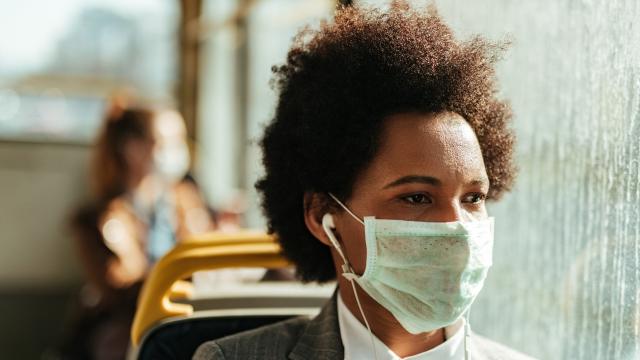For those fortunate enough to live somewhere with decent public transportation and rely on it to get around, the past six months have probably been a challenge. Even though a lot of our lives have moved into — and stayed in — our homes, not everyone has the option to work or learn remotely. Of course, this has been the case since the beginning of the pandemic for thousands of essential workers who have continued to provide us with the goods and services we need. (Thank you, essential workers!)
Anyway, as schools and offices start to open back up, this means more people will be using public transit again. Given that the pandemic is definitely still going on, it’s time to take a look at how we can be safer when riding subways, buses and trains. Here are some tips from a recent New York Times article on how to return to mass transit as safely as possible.
Think it through first
Before hopping on a bus or entering a subway station, consider which mode of transportation poses the least risk to yourself and others. This means taking things into account like whether you’ll be waiting indoors or outdoors, and the travel time (i.e. the amount of time you have to spend in an enclosed space with other passengers).
“The more that you can be in open air and the farther you can be from other people and the less likely that other people will be without a mask is the safest way to go,” Robyn Gershon, a professor of epidemiology at New York University told the New York Times.
And ideally, don’t travel during peak hours, if at all possible. The emptier it is, the better.
Find the (freshest) air
This isn’t really a possibility on the subway, but if you’re riding the bus, try to get a window seat, and crack open the window if you can. Apply the same strategy to navigating subway stations and bus terminals. If there’s the option to take the stairs or an escalator instead of an elevator (and this is something you’re physically able to do), then always go for the way that has the best ventilation.
Stay away from high-touch surfaces
At this point, we should already be in the habit of trying to minimise any contact we have with high-touch surfaces, and this definitely applies to mass transit. For example, use contactless payment methods if possible. And, of course, wash your hands before and after taking any form of public transportation, and use plenty of hand sanitiser along the way.
In addition, the New York Times article recommends staying away from poles and rails on subways, trains, buses and ferries, as well as any touch screens, keypads and elevator buttons. Also, just pass through the turnstile — there’s no reason to put your hands on it.
Pay attention to and follow the rules
It should go without saying that all the usual rules and COVID public health measures still apply on public transit. But on top of that, take a look around the station, bus stop or in the vehicle itself for any new signs or postings regarding the current best safety practices. And don’t forget to look down: there may be social distancing decals, or information on the best way to get out of the station.
Skip the snacks (and chats)
If you fall into the “eating on public transportation is gross all the time, pandemic or not” category, then this shouldn’t be an issue. But if you’re used to taking your breakfast on the train, you might want to consider adjusting your morning schedule so you can do that in the safety and comfort of your own home.
There are a few reasons for this. First, any sort of touching/food/mouth situations should be avoided on the bus and subway right now. Also, to eat, that means you’d have to take your mask off (even if it’s just for a short period), and that’s also not a great idea at the moment.
If you’re someone with a face that, for some reason, prompts strangers to chitchat or tell you their life story, you now have a great excuse to slowly back away: as the Times article points out, talking “sprays aerosolised droplets that can carry virus particles.” You’re welcome, introverts (and anyone else who would prefer to be left alone on public transportation).

Leave a Reply
You must be logged in to post a comment.